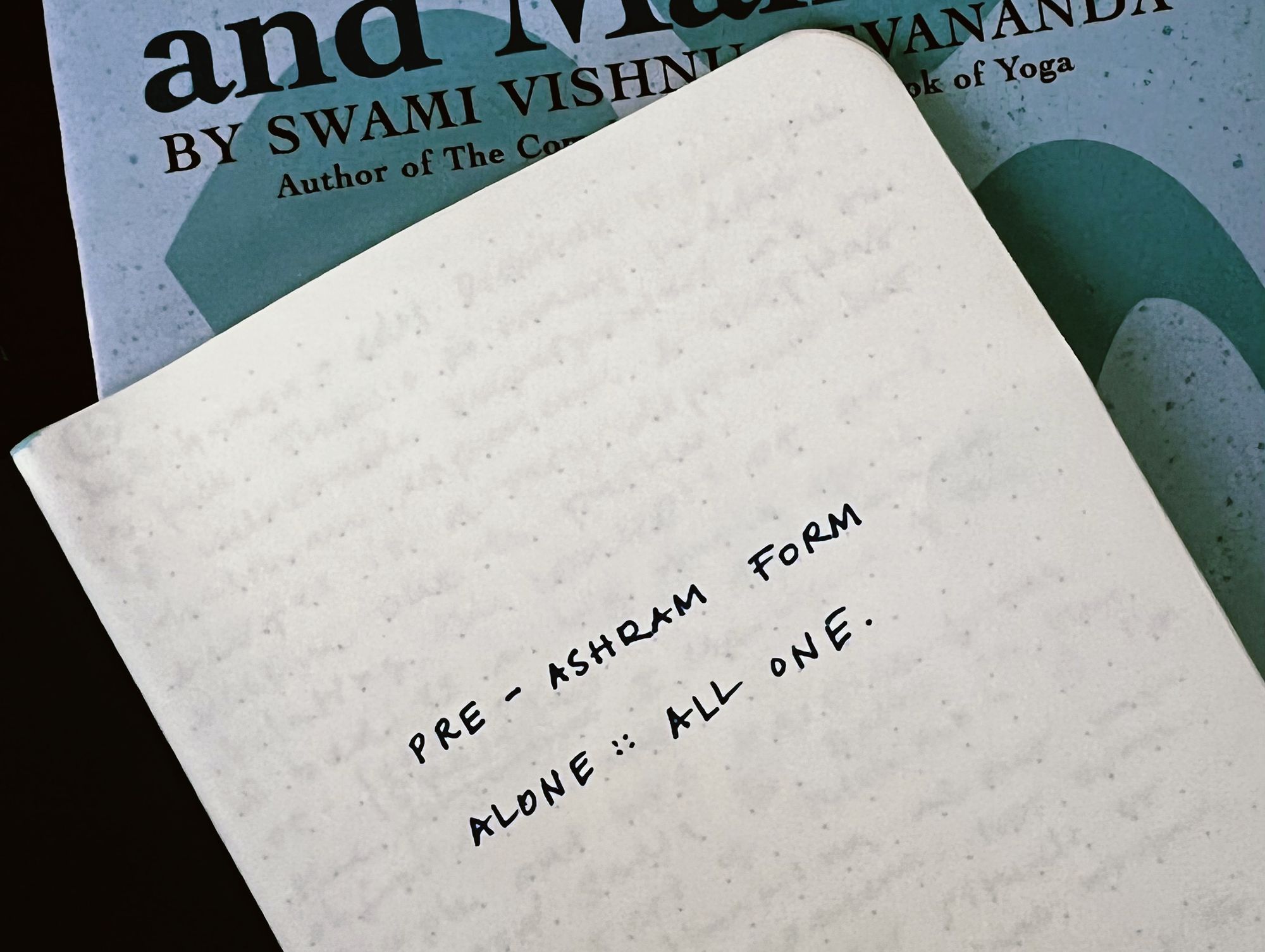What is a yogic life?
We can define a yogic life as a life of self-discipline based on the tenets of simple living and higher thinking. The ancient sages that developed Yoga philosophy and passed it down to us from guru to guru believed that the body is an instrument to attain self-realization, a vehicle for the soul to reach the true self. By applying these five yogic principles, one can keep the vehicle in perfect conditions so it can reach the final destination: sadhana (liberation), and live a joyous life on the way there.
This vehicle requires five things to work properly: a lubricating system, a battery, a cooling system, fuel, and a conscious driver.
/one
Proper exercise - Asanas
The lubricating system of the vehicle. Yoga regards physical health as a state where all organs function in harmony under the intelligent control of the mind. The word asana means steady pose in Sanskrit, and the daily practice of these asanas act as a lubricating routine for the joints, muscles, tendons, ligaments and other parts of the body, focusing on internal functions such as circulation and flexibility rather than only muscle building. The benefits of asanas reach deeper and more subtle parts of the body, therefore the internal organs are stimulated and toned to function more efficiently.
“The body is as young as it is flexible” says Swami Sivananda. The main physical focus of asanas is the heath of the spine; by improving the spine’s flexibility and strength through regular asana practice, circulation is increased and all the nerves (housed on the spine) get their supply of nutrients and oxygen. Asanas work on the internal machinery of the body, from glands and organs, to muscles and bones. Even the endocrine system is rejuvenated, helping as well on balancing emotions and improving the mental outlook of life.
Hand in hand with asana practice, yoga focuses on integrating deep breathing and concentration of the mind. This slow, conscious practice of asanas go beyond any mere physical benefit, becoming mental exercises in concentration and meditation, and a personal spiritual practice that requires no religions or beliefs, just desire to connect with oneself.
/two
Proper breathing - Pranayama
Pranayama is battery of the vehicle, connecting it to the solar plexus where tremendous potential energy is stored. When tapped through breath work, this energy (or prana) is released and utilized for both physical and mental rejuvenation.
To a yogui there are two main functions of proper breathing: to bring more oxygen to the blood and thus to the brain, and to control prana (vital energy), leading to control the mind.
Breath is life. Pranayama (controled breathing) beings with controlling the motions of the lungs; the harmonious and controlled coordination of inhalation and exhalation creates a wave-like motion of effort and release in the nervous system, which results in a combination of feeling relaxed and energetic both in body and mind.
Most people use only a fraction of their potential lung capacity. We have access to the most powerful form of energy (life force) and yet we don’t know how to breathe properly. So we complain of being tired, and we don’t know why. We can live without food for days but deprive us of breath and we die within minutes. It is remarkable how little attention we pay to the importance of proper breathing.
The practice of yoga demands that we reverse these habits. By bringing awareness into our breath during yoga we keep that awareness throughout our day. We learn how to use our full lung capacity, expanding our capacities to absorb oxygen and release co2, keeping the body in vibrant health and accessing the strongest form of energy available for living beings: prana.
/three
Proper relaxation - Savasana
Every vehicle needs a cooling down system. In modern life we are constantly overstimulating the mind and underestimating its needs to rest. Proper relaxation is the only way to recharge the body. People confuse entertainment for relaxation, thinking that watching a movie or going out for some drinks is a way to “relax”, but in proper relaxation there should be little to no energy (prana) being consumed.
Each day the body produces all substances and energy necessary for the next day. It often happens that all these precious energy might need to be consumed within a few minutes by bad moods, anger, irritation, etc. This grows into a regular habit if we don’t learn how to properly relax. We will keep on wasting most of the body’s vital energy – keeping the body in continual readiness for work instead of in actual useful work done. We must teach our bodies how to economize the vital life force produced by it.
Physical, mental and spiritual relaxation are all a big part of yoga asanas and yoga philosophy; savasana is another way to see the body and mind as vehicles to the Self. As long as a person identifies with the body and mind, there will be suffering. Proper relaxation eases the mind and allows us to seek for the pure consciousness within. This ability comes with the knowledge that the source of all power, peace and strength is in the Self, not the body. This identification completes the process of relaxation.
/four
Proper diet - vegetarian
A yogic diet provides the best fuel for the vehicle to run properly. Optimum utilization of food, air, water and sunlight plus a non-violence approach to eating is essential to live a joyful life.
The yogic diet is lacto-vegetarian, consisting on foods that are easily digested and are as close to nature as possible. Yoguis believe that the sun is the source of prana for all life in our planet, and the fruits, vegetables and grains that are directly nourished by the sun have the greatest life promoting properties. This is the food cycle, and these plants that grow with sunlight are in the top of the chain, providing the most nutritional and pranic value to our physical and energy bodies. The food value of animal flesh is at the bottom of the chain, referred to as “second hand” energy, and apart from being full of toxins and hormones it contains absolutely no prana.
”Eat to live, not live to eat” is a philosophy that we should apply in our daily lives. We eat too much, that is a fact. And yet, we fail to understand how sacred food is, consuming fast food or eating as a way to entertain or distract ourselves. Yoga brings awareness to the pranic value in the food we consume, and the way we consume it.
There’s many reasons why becoming a vegetarian will make us have a healthier, longer and more peaceful life. The main reason for following a vegetarian diet is the yogic principle of Ahimsa, non-violence. Yoga philosophy views all life as one, and contributing to another being’s suffering and killing contravenes that principle.
The practice of ahimsa towards animals also leads to the integration of ahimsa into our daily life, and the practice of physical and emotional non-violence in our relationships with our fellow human beings. This is an essential step toward understanding the oneness of life, which will eventually lead us to Self-realization.
/five
Positive Thinking and Meditation - Vedanta and Dyana
Finally, we can have a vehicle in optimal conditions, but it will go nowhere without a conscious driver. Meditation is the key to everything. This will make more and more sense as one begins the yogic path.
Only when the waters are still we can see the bottom clearly. In the same way, when the mind is still and free from thoughts and desires, you can see the “Self”. This is called yoga; stillness of mind.
Meditation is not something that yoga can teach us; we already have the ability to shut out thoughts. The difference is that generally we have learned to focus the mind on external objects to “distract” ourselves, instead of focusing it on internal objects to concentrate.
When the mind is focused internally, time passes unnoticed, as if it didn't exist – time and space become modifications of the mind. In this state we begin to understand that all happiness achieved through the mind is temporary and fleeting, limited by nature. To achieve a state of lasting happiness and absolute peace, we must learn how to calm the mind. We must concentrate and go beyond the mind – by turning our gaze inward we deepen the experience of concentration.
The meditative state transcends all time/space limitations. In it there is no past nor future, but only the consciousness of “I am” in the eternal NOW.
Curving and stilling the oscillations of the mind is a lifelong skill that can be attained with a daily practice of meditation. As I mention before, meditation is truly, truly the key to everything.
You don't need to "be flexible" to practice yoga philosophy
Hopefully this post inspired you to follow some of these principles to attain a life of simple living and higher thinking. When we hear "yoga" we normally think yoga asanas, but the goal of yoga is not to learn how to stand on your head, the goal is to learn how to stand of your feet to develop self-discipline, calm the mind and meet the Self.
Thank you for reading, much much much to come on Yoga Vedanta.
Art by Ajna Nami 8

Here's a detailed entry about the Ashram I'm living in. An entry dedicated to meditation is coming as soon as I land into the material world again (:
stay curious
m(:



